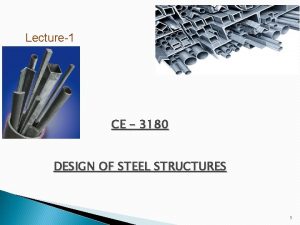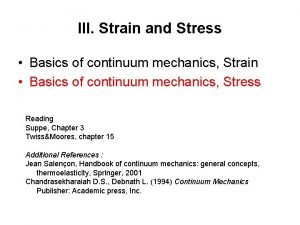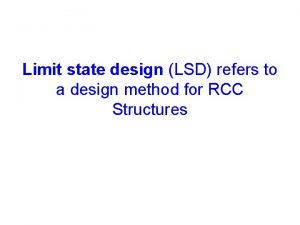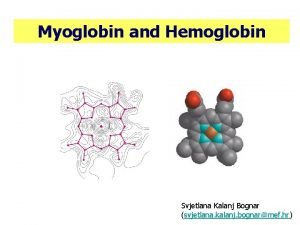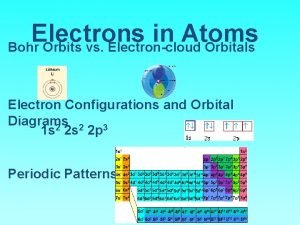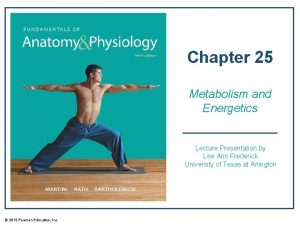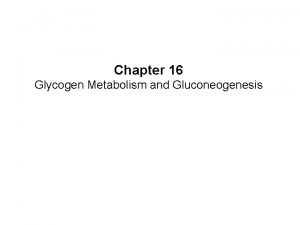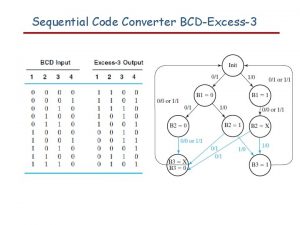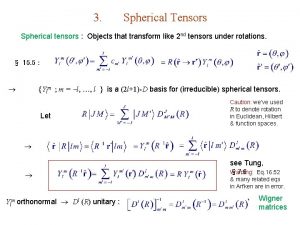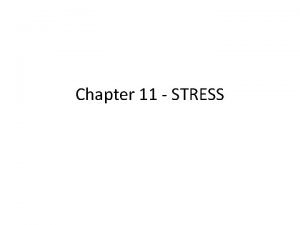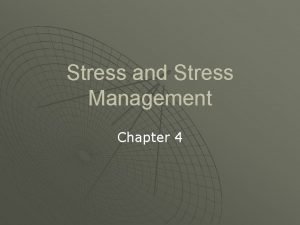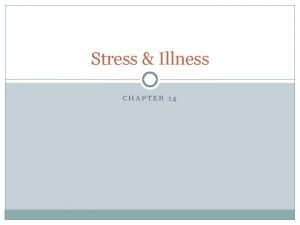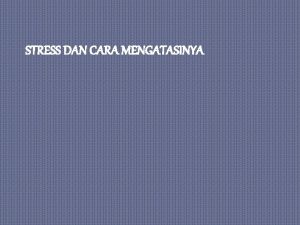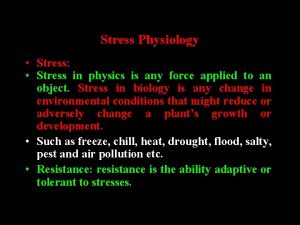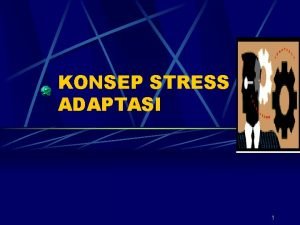TENSORS 3 D STRESS STATE 1 Tensors Tensors








![Transformations • Transformation of vector p [p 1, p 2, p 3 ] from Transformations • Transformation of vector p [p 1, p 2, p 3 ] from](https://slidetodoc.com/presentation_image_h/aba2f3abcc378d804a519972e868b36f/image-9.jpg)




![• The Transformation of a second rank Tensor [Tkl] from one reference frame • The Transformation of a second rank Tensor [Tkl] from one reference frame](https://slidetodoc.com/presentation_image_h/aba2f3abcc378d804a519972e868b36f/image-14.jpg)




- Slides: 18

TENSORS/ 3 -D STRESS STATE 1

Tensors • Tensors are specified in the following manner: – A zero-rank tensor is specified by a sole component, independent of the system of reference (e. g. , mass, density). – A first-rank tensor is specified by three (3) components, each associated with one reference axis (e. g. , force). – A second-rank tensor is specified by nine (9) components, each associated simultaneously with two reference axes (e. g. , stress, strain). – A fourth-rank tensor is specified by 81 components, each associated simultaneously with four reference axes (e. g. , elastic stiffness, compliance). 2

• The Number of Components (N) required for the description of a TENSOR of the nth Rank in a k-dimensional space is: N = kn (4 -1) EXAMPLES (a) For a 2 -D space, only four components are required to describe a second rank tensor. (b) For a 3 -D space, the number of components N = 3 n Scalar quantities 30 Rank Zero Vector quantities 31 Rank One Stress, Strain 32 Rank Two Elastic Moduli 34 Rank Four 3

• The indicial (also called dummy suffix) notation will be used. • The number of indices (subscripts) associated with a tensor is equal to its rank. It is noted that: – density ( ) does not have a subscript – force has one (F 1, F 2, etc. ) – stress has two ( 12, 22, etc. ) • The easiest way of representing the components of a secondrank tensor is as a matrix • For the tensor T, we have: 4

The collection of stresses on an elemental volume of a body is called stress tensor, designated as ij. In tensor notation, this is expressed as: (4 -2) where i and j are iterated over x, y, and z, respectively. 5

• Here, two identical subscripts (e. g. , xx) indicate a normal stress, while a differing pair (e. g. , xy) indicate a shear stress. It is also possible to simplify the notation with normal stress designated by a single subscript and shear stresses denoted by , so: x xx xy (4 -3) 6

• In general, a property T that relates two vectors p = [p 1, p 2, p 3] and q = [q 1, q 2, q 3] in such a way that (4 -4) where T 11, T 12, ……. T 33 are constants in a second rank tensor. 7

• (Eqn. 4 -4) can be expressed matricially as: (4 -5) • Equation 4 -5 can be expressed in indicial notation, where (4 -6) • The symbol is usually omitted, and the Einstein’s summation rule used. (4 -7) Free Subscript “dummy” Subscript (appears twice) 8
![Transformations Transformation of vector p p 1 p 2 p 3 from Transformations • Transformation of vector p [p 1, p 2, p 3 ] from](https://slidetodoc.com/presentation_image_h/aba2f3abcc378d804a519972e868b36f/image-9.jpg)
Transformations • Transformation of vector p [p 1, p 2, p 3 ] from reference system x 1, x 2, x 3 to reference x’ 1, x’ 2, x’ 3 can be carried p out as follows X’ 3 X’ 2 X 1 X’ 1 where = Angle between X’i. Xj New Old 9

• In vector notation: p = p 1 i 1 + p 2 i 2 + p 3 i 3 where i 1, i 2, and i 3 are unit vectors (4 -8) p’ = p 1 cos(X’ 1 X 1) + p 2 cos(X’ 1 X 1) + p 3 cos(X’ 1 X 1) = a 11 p 1 + a 12 p 2 + a 13 p 3 New (4 -9) Old where aij = cos (X’i. Xj) is the direction cosine between X’i and Xj. 10

• The nine angles that the two systems form are as follows: Old System New System = (4 -10) This is known as the TRANSFORMATION Matrix 11

• What is the transformation matrix for a simple rotation of 30 o about the z-direction? 30 o 12

• For any Transformation from p to p’, determine the Transformation Matrix and use as follows: (4 -11) This can be written as: (4 -12) • It is also possible to perform the opposite operation, i. e. , new to old (4 -13) 13
![The Transformation of a second rank Tensor Tkl from one reference frame • The Transformation of a second rank Tensor [Tkl] from one reference frame](https://slidetodoc.com/presentation_image_h/aba2f3abcc378d804a519972e868b36f/image-14.jpg)
• The Transformation of a second rank Tensor [Tkl] from one reference frame to another is given as: (4 -14 a) OR, for stress (4 -14 b) Eqn. 4 -14(a) is the transformation law for tensors and the letters and subscripts are immaterial. • Transformation from new to old system is given as: (4 -15) 14

NOTES on Transformation • Transformation does not change the physical integrity of the tensor, only the components are transformed. • Stress/strain Transformation results in nine components. • Each component of the transformed 2 nd rank tensor has nine terms. • lij and Tij are completely different, although both have nine components. – Lij is the relationship between two systems of reference. – Tij is a physical entity related to a specific system of reference. 15

Transformation of the stress tensor ij from the system of axes to the • We use eqn. 4 -14: – First sum over j = 1, 2, 3 – Then sum over i = 1, 2, 3 (4 -16) 16

• For each value of k and l there will be an equation similar to eqn. 4 -16. • To find the equation for the normal stress in the x’ 1 direction, let m = 1 and n = 1. • Let us determine the shear stress on the x’ plane and the z’ direction, that is ’ 13 or x’z’ for which m = 1 and n = 3 17

• The General definition of the Transformation of an nth-rank tensor from one reference system to another (i. e. , T T’) is given by: T’mno……. = lmilnjlok……………. Tijk………. . (4 -16) Note that aij = lmi (the letters are immaterial) • The transformation does not change the physical integrity of the tensor, only the components are transformed 18
 True strain equation
True strain equation Axial stress definition
Axial stress definition Chapter 10 stress responses and stress management
Chapter 10 stress responses and stress management Working stress method and limit state method
Working stress method and limit state method State of stress
State of stress Serviceability limit state design
Serviceability limit state design Do
Do State to state regionalism
State to state regionalism Synchronous counter
Synchronous counter Good and bad state graphs in software testing
Good and bad state graphs in software testing T state vs r state
T state vs r state What is a degenerate orbital
What is a degenerate orbital T state vs r state
T state vs r state Absorptive state and postabsorptive state
Absorptive state and postabsorptive state Glycogenesis pathway
Glycogenesis pathway Age of consent per state
Age of consent per state Current state vs future state diagram
Current state vs future state diagram Which two states are equivalent state
Which two states are equivalent state Duncker diagram example
Duncker diagram example



